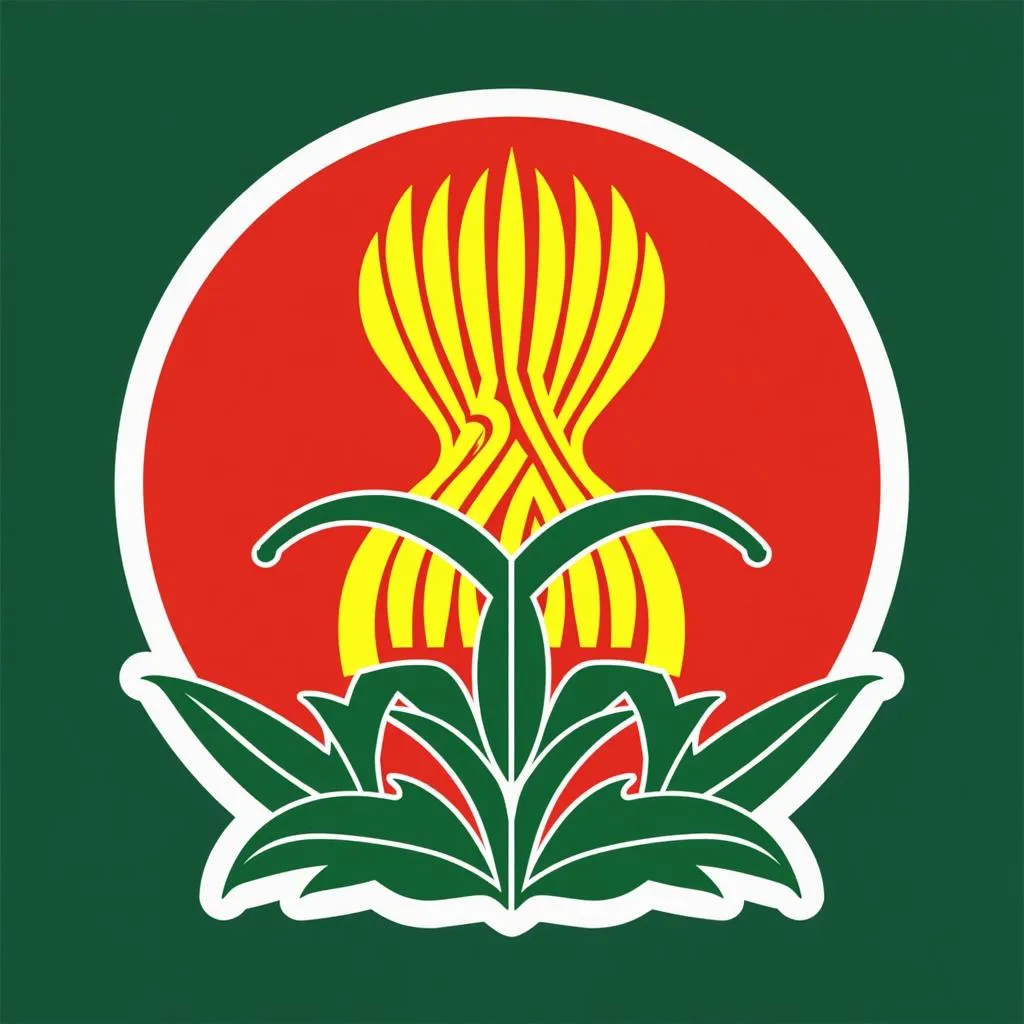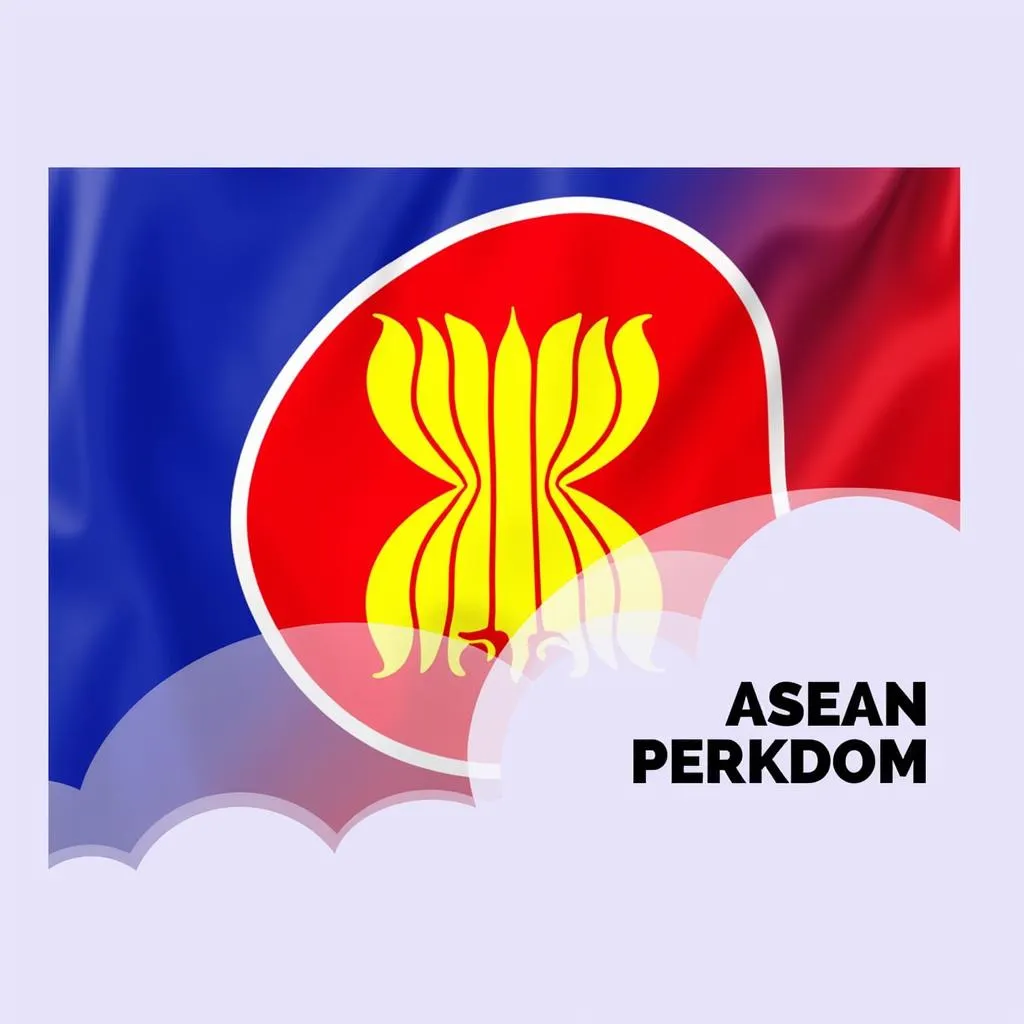The ASEAN symbol, a vibrant tapestry of ten rice stalks bound together, holds profound meaning, reflecting the shared aspirations and values of the Association of Southeast Asian Nations. More than just an emblem, the ASEAN symbol encapsulates the spirit of unity, harmony, and progress that binds its member states together.
The Symbolism of Rice: Nourishing a Shared Identity
 ASEAN symbol with ten rice stalks representing member states
ASEAN symbol with ten rice stalks representing member states
At the heart of the ASEAN symbol lies the potent image of rice, a staple food and cultural cornerstone across Southeast Asia. This choice is far from arbitrary; it speaks to the deeply rooted agricultural heritage of the region and the shared experiences of its people. Rice, a symbol of life and sustenance, transcends geographical boundaries, connecting communities through shared traditions, cuisines, and agricultural practices. By incorporating rice, the ASEAN symbol subtly acknowledges this common ground, fostering a sense of shared identity and interdependence among its diverse member states.
Ten Stalks, One Vision: The Power of Unity
The ten rice stalks, meticulously bound together, represent the ten member states of ASEAN: Brunei Darussalam, Cambodia, Indonesia, Laos, Malaysia, Myanmar, the Philippines, Singapore, Thailand, and Vietnam. This visual representation of unity underscores the strength derived from collective action and the shared commitment to peace, stability, and prosperity.
 ASEAN emblem symbolizing unity and cooperation among Southeast Asian countries
ASEAN emblem symbolizing unity and cooperation among Southeast Asian countries
The act of binding the stalks together speaks to the power of collaboration and the importance of setting aside differences to work towards a common goal. This message of unity is particularly significant in the context of Southeast Asia’s diverse political landscape and historical complexities. The ASEAN symbol serves as a visual reminder that despite their differences, member states are stronger together, capable of overcoming challenges and achieving shared aspirations through cooperation and mutual respect.
The Circle of Harmony: Fostering Peace and Stability
Encasing the bound rice stalks is a circle, a universally recognized symbol of wholeness, unity, and harmony. Within the context of the ASEAN symbol, the circle represents the collective desire for a peaceful and stable Southeast Asia. It signifies the commitment to dialogue, cooperation, and peaceful resolution of disputes, principles enshrined in the ASEAN Charter.
The circular shape also evokes a sense of inclusivity and equality. Just as all points on a circle are equidistant from the center, the ASEAN symbol suggests that all member states, regardless of their size or economic standing, have an equal stake in the organization and are valued equally within the ASEAN community.
Blue, Red, Yellow, and White: A Tapestry of Shared Values
The colors adorning the ASEAN symbol – blue, red, yellow, and white – are not chosen randomly; they hold specific meanings, each reflecting core values of the association. Blue represents peace and stability, while red symbolizes dynamism and progress. Yellow, often associated with prosperity, signifies the commitment to economic growth and development. White, a color often linked to purity, embodies the shared aspiration for a just and equitable society.
 Meaning of colors in the ASEAN flag: blue, red, yellow, and white
Meaning of colors in the ASEAN flag: blue, red, yellow, and white
The strategic use of these colors within the ASEAN symbol serves to visually reinforce the organization’s commitment to these core values. It’s a powerful reminder of the shared goals and aspirations that underpin the ASEAN community.
The Enduring Relevance of the ASEAN Symbol
The ASEAN symbol, with its rich layers of meaning, continues to resonate deeply within the region and beyond. It serves as a visual representation of the shared values, aspirations, and identity of Southeast Asia. The symbol is a constant reminder of the power of unity, the importance of harmony, and the unwavering commitment to progress. As ASEAN continues to navigate the complexities of the 21st century, the symbolism embedded within its emblem remains as relevant and powerful as ever.

